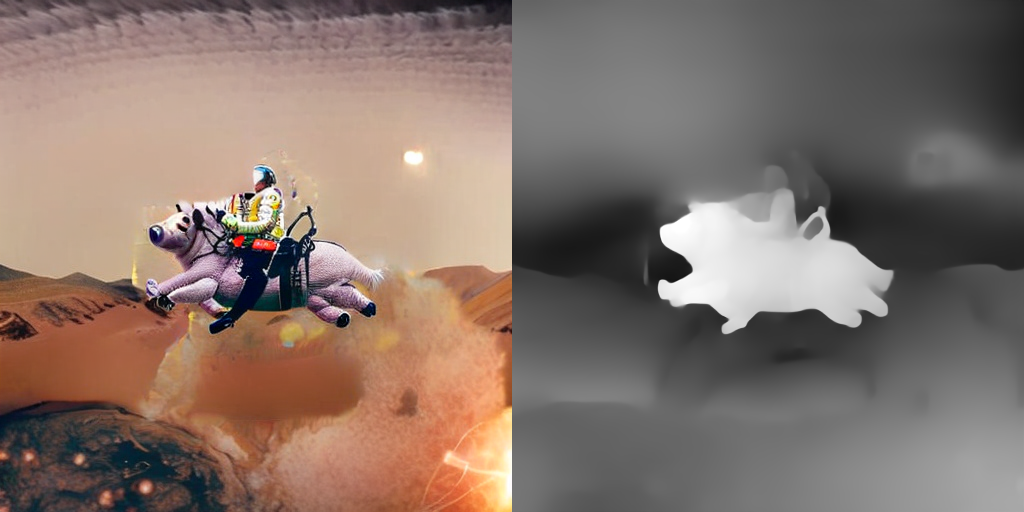Ldm3d generates an image and a depth map from a given text prompt unlike the existing text-to-image diffusion models such as Stable Diffusion which only generates an image. This is a modified version that adds inpainting capabilities, so you can fill in Depth and Color in images. The Unet was re-trained with an extra 5 channels (1 for the mask, 4 for the masked depth/color joint image).
Original Image+Depth:
a photo of an astronaut riding a horse on mars
a photo of an astronaut riding a pig
Mask:
Use the StableDiffusionLDM3DInpaintPipeline class in this diffusers fork
unet = UNet2DConditionModel.from_pretrained("pablodawson/ldm3d-inpainting", cache_dir="cache" )
pipe = StableDiffusionLDM3DInpaintPipeline.from_pretrained("Intel/ldm3d-4c", cache_dir="cache" )
pipe = pipe.to("cuda")
prompt = "a photo of an astronaut riding a horse on mars"
input_image = Image.open("input_image.jpg")
depth_image = Image.open("depth_image.png").convert("RGB")
mask_image = Image.open("mask_image.png")
output = pipe(prompt=prompt, image=input_image, mask_image=mask_image, depth_image=depth_image)
This was the training script used:
accelerate launch train.py --mixed_precision="fp16" --use_ema --resolution=512 --random_flip --train_batch_size=1 --gradient_accumulation_steps=4 --gradient_checkpointing --max_train_steps=15000 --learning_rate=1e-05 --max_grad_norm=1 --checkpointing_steps=1500 --lr_scheduler="constant" --lr_warmup_steps=0


